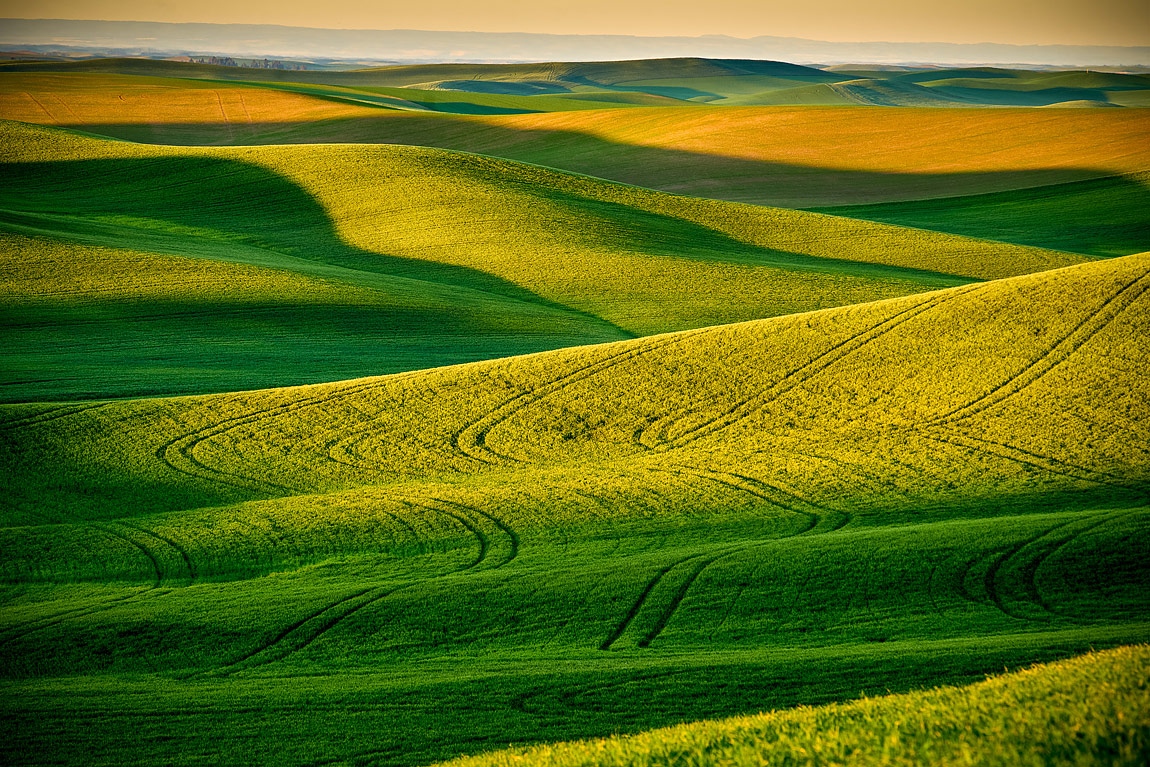Howard Frisk, a freelance photographer, described the Palouse " as the most serene and pastoral of the seven wonders of Washington State." In addition to the Palouse, these Seven Wonders include Mt. Rainier, Mt. St. Helen, the Columbia River Gorge, the Hoe Rain Forest, Long Beach and the Channeled Scablands, making Washington a good place for photographers. If I were from Britain, I would say the Palouse is an Area of Outstanding Natural Beauty.
The Palouse is a region in southeastern Washington characterized by gentle rolling hills covered with wheat fields. The hills were formed over tens of thousands of years from wind-blown dust and silt, called "loess", from dry regions to the southwest. The hills and valleys look like giant sand dunes because they were formed in much the same way. In the spring, they are lush shades of green when the wheat and barley are young, and in the summer, they are shades of yellow and gold when the crops are ready for harvest.
Staying in Pulman, Washington, I was up before dawn to drive up Huggins Road, north of Garfield. Fortunately, I purchased one of Teri Lou's incredibly detailed maps of the Palouse region, on which she annotated the best high vantage points for taking pictures. To get to this point, I had spent a couple of days driving the regain and checking out the spots where I wanted to be both for morning and evening shooting.
The image submitted here strongly represents what the Palouse has to offer: the combinations of various shades of green blended with the reddish brown of the soil. Of course, this is excelled by the rolling loess hills producing highlights and shadows in the early morning light. Adding to the natural texture are the tracker paths through the fields. It was a wonderful morning.


